In many areas of the existing – from the macrocosm to the microcosm – harmonic oscillations can be observed, i.e. constant, repetitive sequences of motion which are inherent to the phenomenon of resonance. Vibrations transfer themselves and stimulate further vibrations (lat. re-sonare = to resonate). I would like to attune artificially and artistically generated vibrations to the natural rhythms of plants.
In May this year I built a device for measuring electrical conductance based on open source knowledge by electricityforprogress. Together with my colleague Björn Bergelt (electrical engineer) and Marcus Degenkolbe (software developer), we extended the prototypical device to a toolkit with which the electric conductance of four plants is measured simultaneously.
By means of a modified Arduino Patch, the measured data is translated into audible MIDI notes, which can be interpreted by a connected synthesizer (Abelton, SonicPi, etc.). In this media-technological way the measured data is sonified – the vitality or stress of the plant becomes audible.
The stomatal conductivity of plants is influenced by the water available in the soil, the condition of the roots (water absorption from the soil) and the condition, i.e. vitality, of the leaves. In this respect, the plant’s own movement can be measured and changed by environmental influences.
The connection between plant sounds, physiological processes and environmental conditions is investigated in this artistic observation system. The project „Mutual Resonance“ makes the media-ecological interactions of humans, their technologies and the plant world perceptible.
Drought stress in particular reveals striking changes in acoustic signals (e.g. in timbre), which allow conclusions to be drawn about the condition of the plant and its environmental conditions. In this context, the project gains climate policy relevance, because the plants‘ reactions to increasingly prolonged periods of heat and drought become perceptible due to climate change.
The staging of the life processes and environmental conditions of plants in an artistic-technical environment requires and promotes new methods of observation and possibilities for artistic design: The correlation of measured values and patterns in natural processes produces aesthetic effects because abstract measured data resonate with sounds. The aesthetic dimension of the media situation reveals the living conditions of a plant world that has come under pressure due to the changed climatic conditions.
Used Tools for Prototyp: SonicPi, Arduino IDE, Serial MIDI, Arduino Uno, Solderless Breadboard, Electrode Leads 3.5mm jack to dual snap, Electro Pads, Jumper Wires, LEDs, 555 Timer IC, Potenziometer, Button, 3.5mm Jack, 5 Pin MIDI Jack, 7×220 ohm resistor, 100 ohm resistor, 0.1 uF capacitor, 4700 pF capacitor, 47 uF capacitor
Project on gitlab: https://gitlab.com/fehlfarbe/mutual_resonance
Mediaphilosophical reflection: http://www.katharinagross.tv/2020/10/pflanzensonifikation
Contributors: Björn Bergelt (Hardware-Entwickler), Marcus Degenkolbe (Arduino-Software-Entwickler), Peteris Ziepel (Audio engineering), Sam Aaron (SonicPi-developer), Katharina Groß (Sound-Design)
Presentation: 29./30.08.2020 OUTSIDEININSIDEOUT @ Torhaus Wehlen in Saxon Switzerland /// 01.-03.10.2020 Political Art Days @ objekt klein a, Dresden: https://www.facebook.com/events/2615904278441801 /// 15.10.-18.10.2020 CYNETART-Festival @ C.Rockefeller Center, Dresden: https://www.crockefeller.org/allgemein/cynetart-2020-a-glimpse-of-a-cybernetic-garden/
Press: DNN: „CYNETART als Biennale„, 15.10.2020 /// MDR-Contest „Freie Sendezeit für freie Künstler“: LINK ZUR MDR-MEDIATHEK
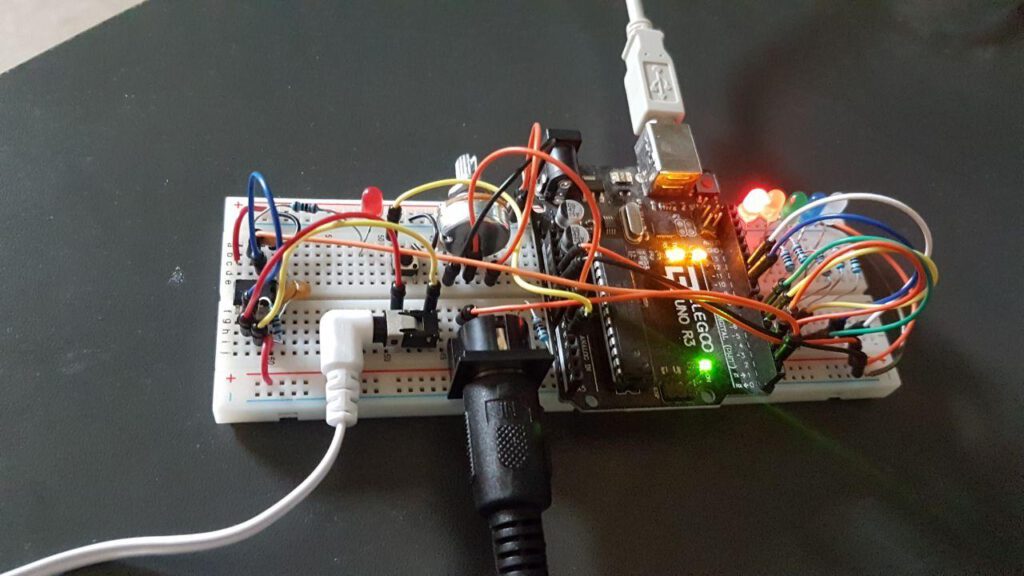
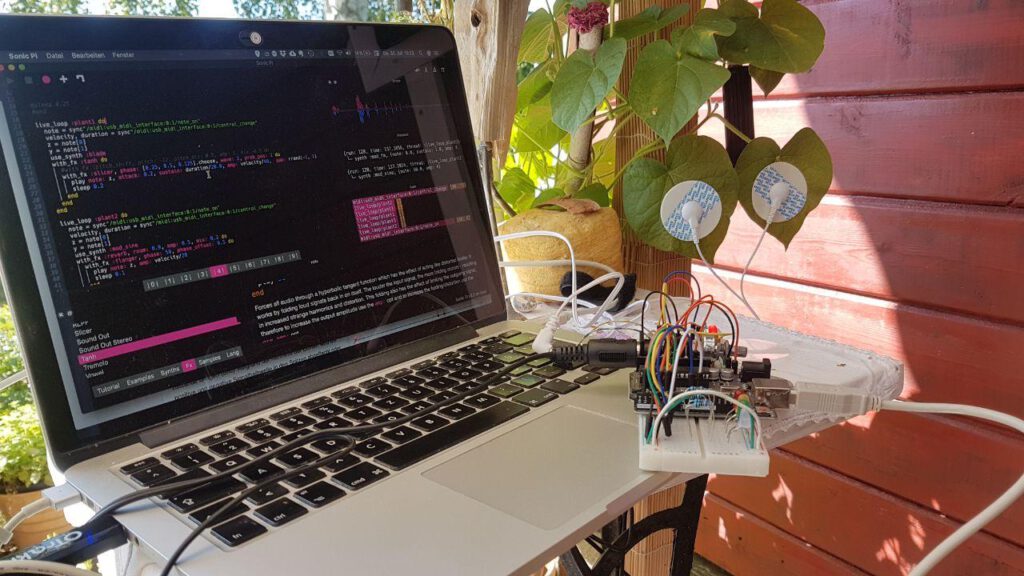

Soldering the Timer-Device 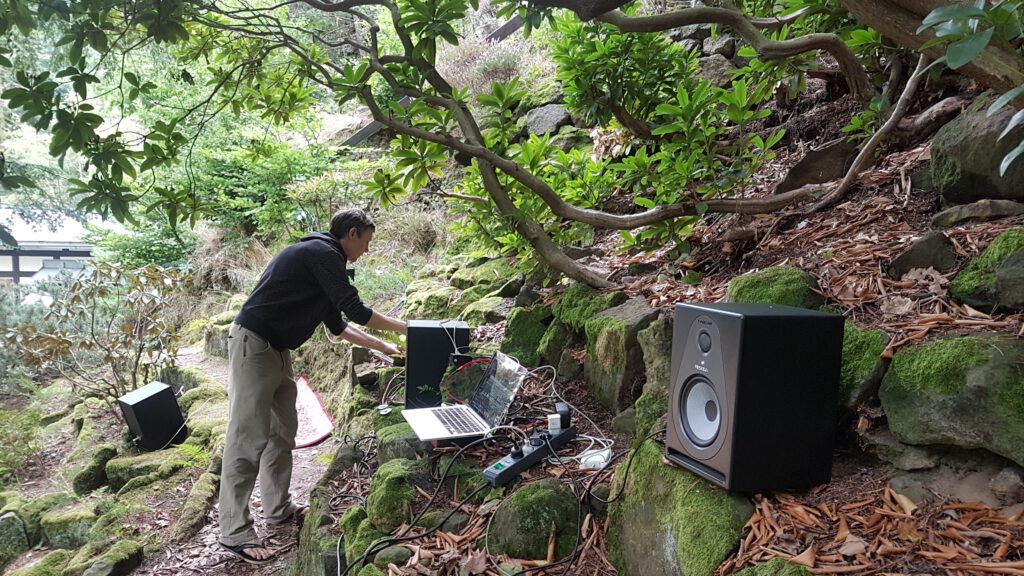
presentation@Wehlen 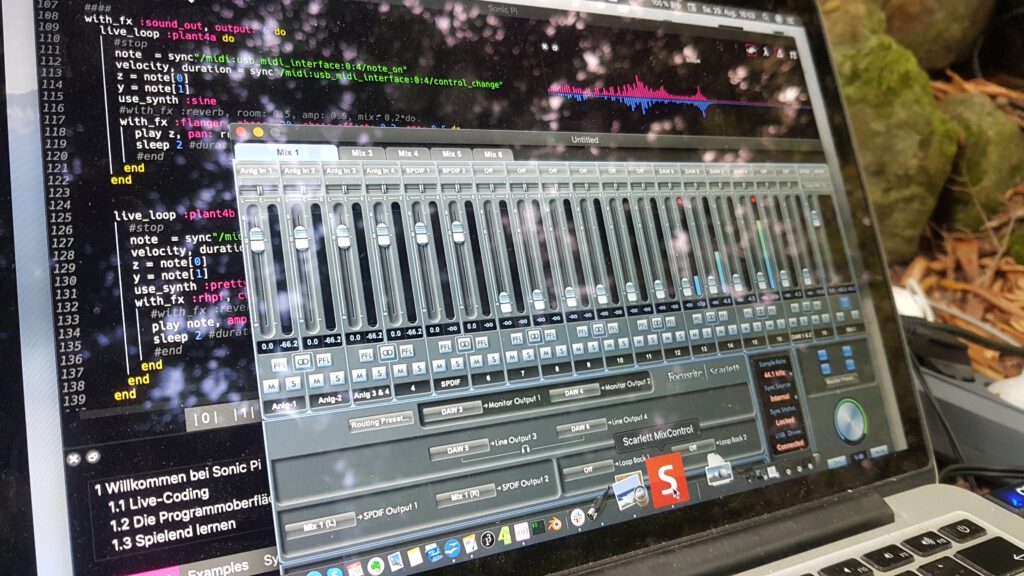
SonicPi and Soundcard-Device 
presentation@Wehlen 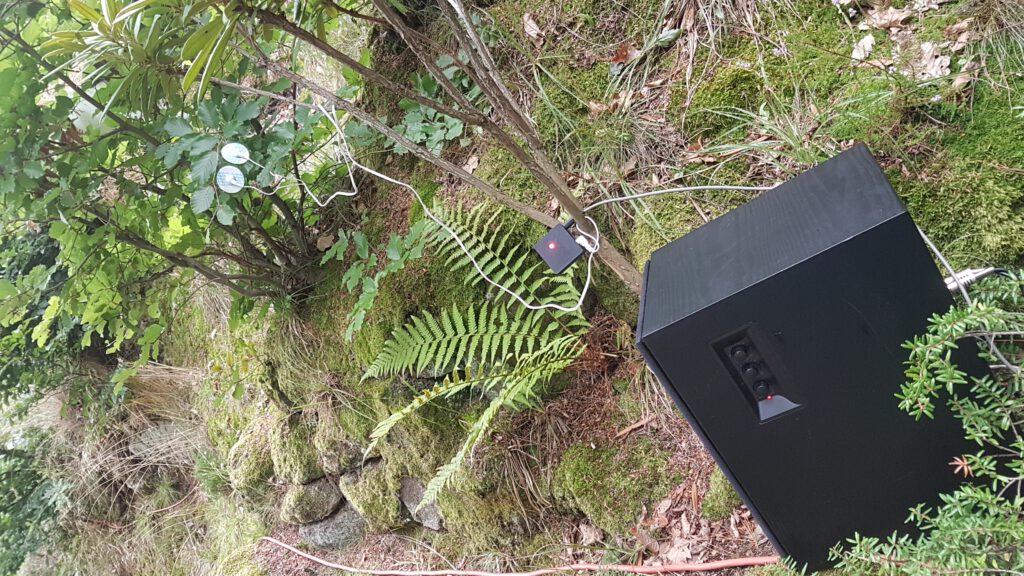
presentation@Wehlen 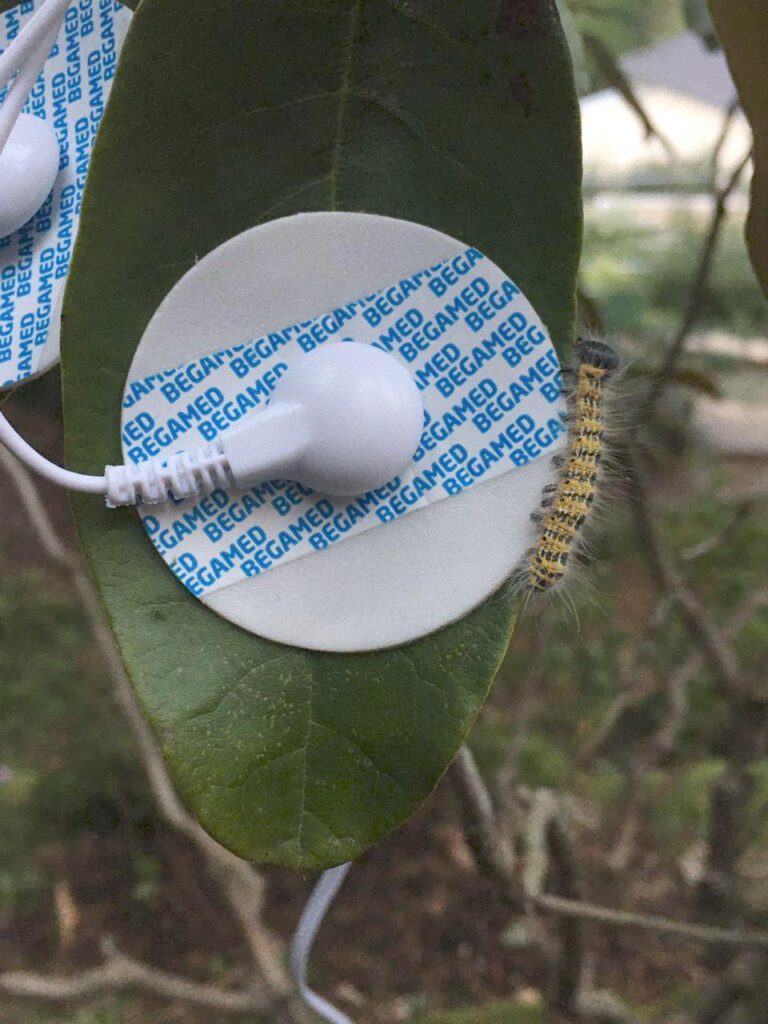
presentation@Wehlen, ©Alesya Yakubouskaya 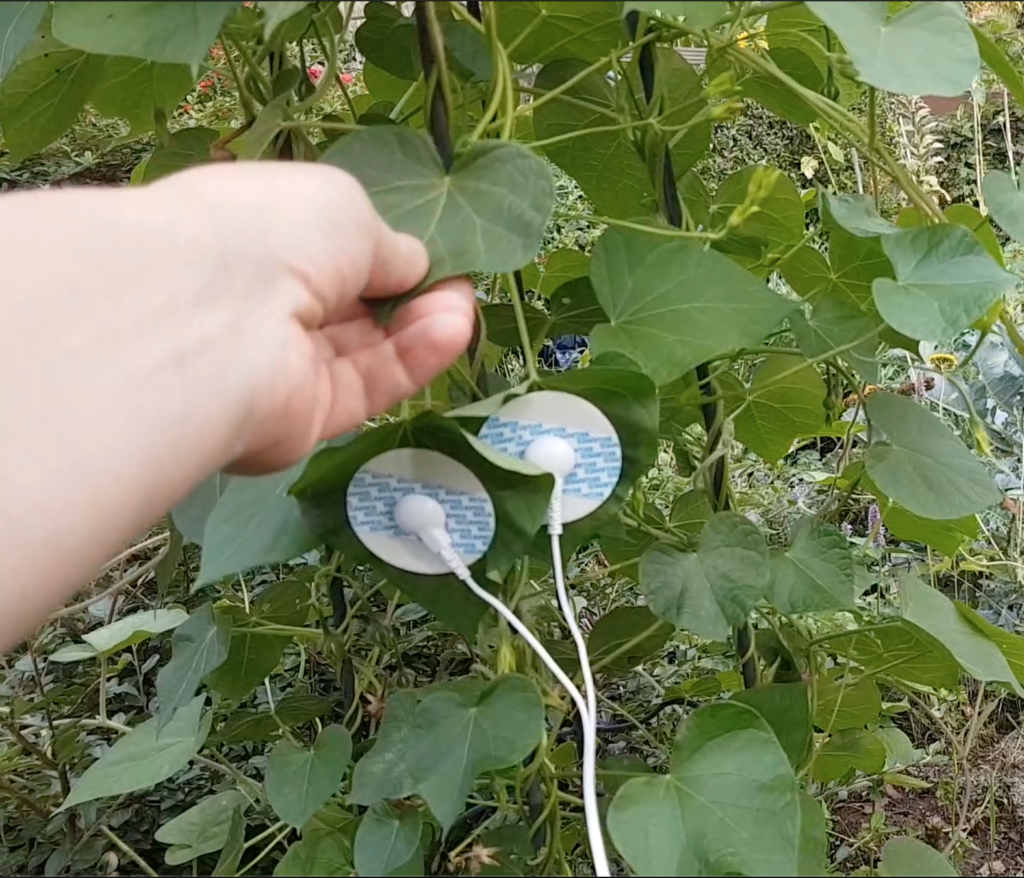
test@homegarden 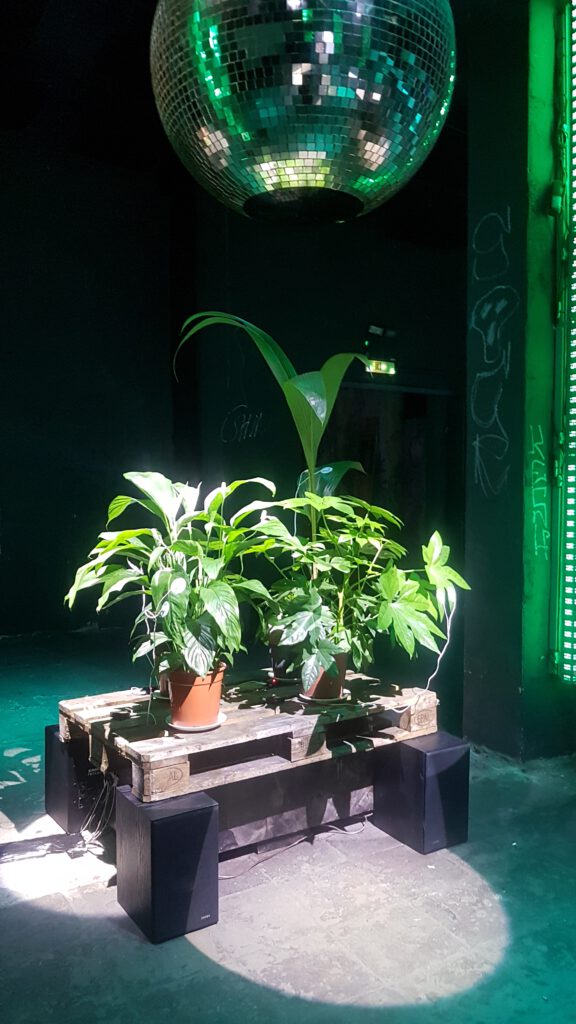
presentation@Political Art Days, objekt klein a Dresden 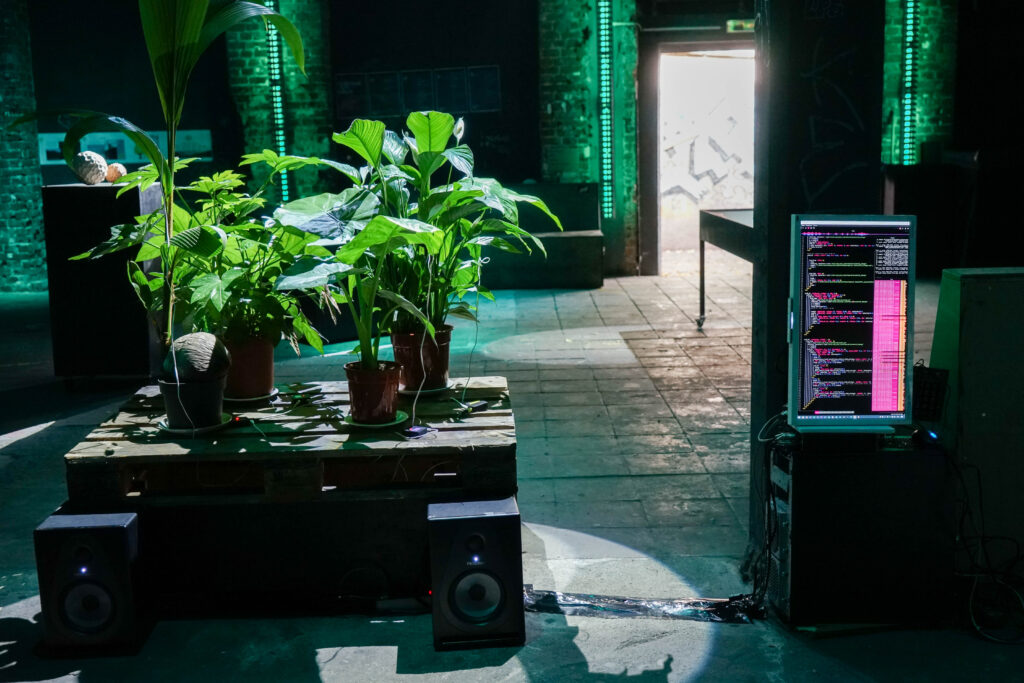
presentation@Political Art Days, objekt klein a Dresden ©Anahi Mou 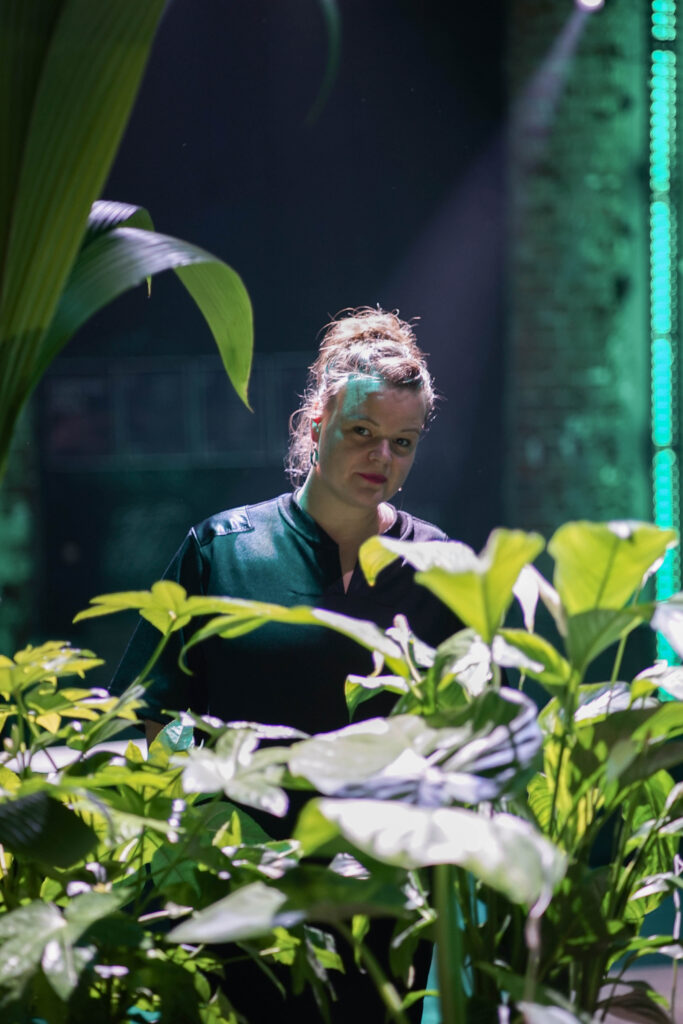
presentation@Political Art Days, objekt klein a Dresden ©Anahi Mou

presentation@CYNETART, C. Rockefeller Center Dresden 
presentation@CYNETART, C. Rockefeller Center Dresden 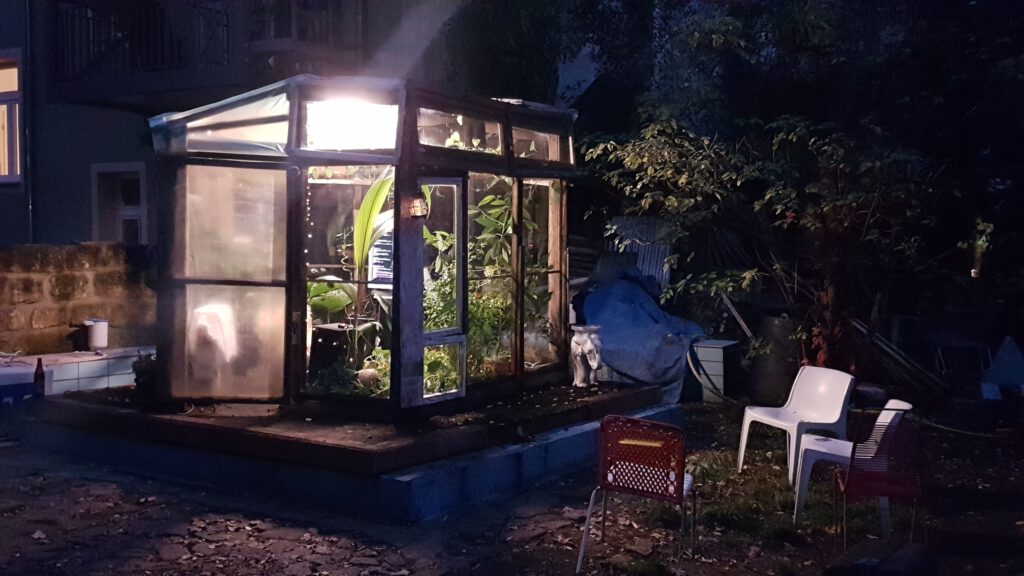
presentation@CYNETART, C. Rockefeller Center Dresden 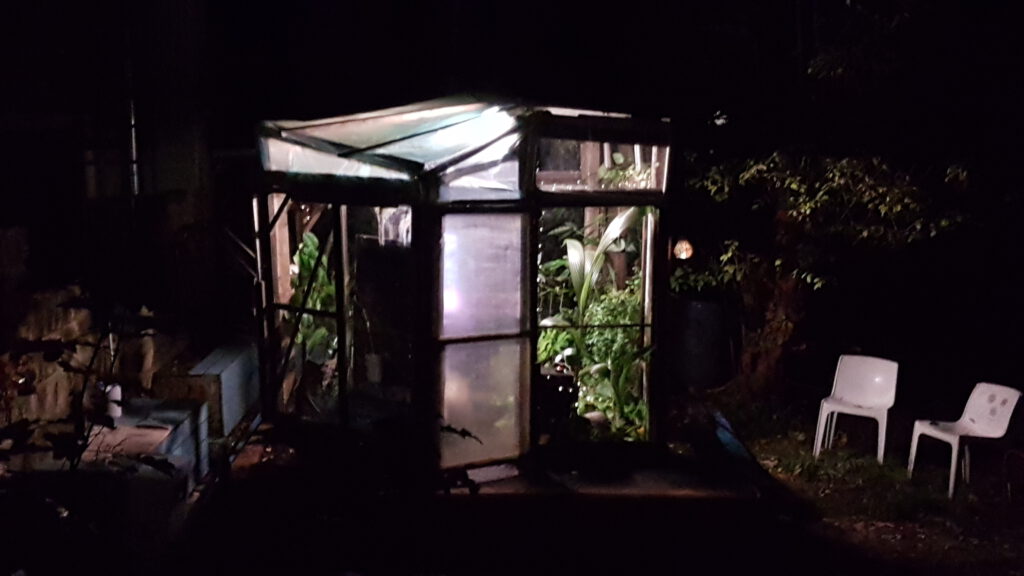
presentation@CYNETART, C. Rockefeller Center Dresden 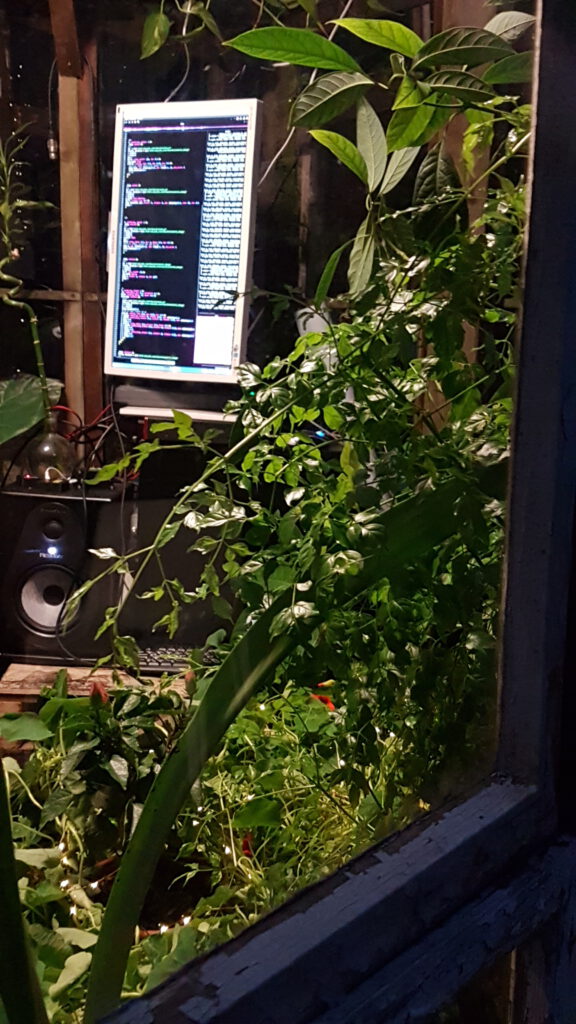
presentation@CYNETART, C. Rockefeller Center Dresden